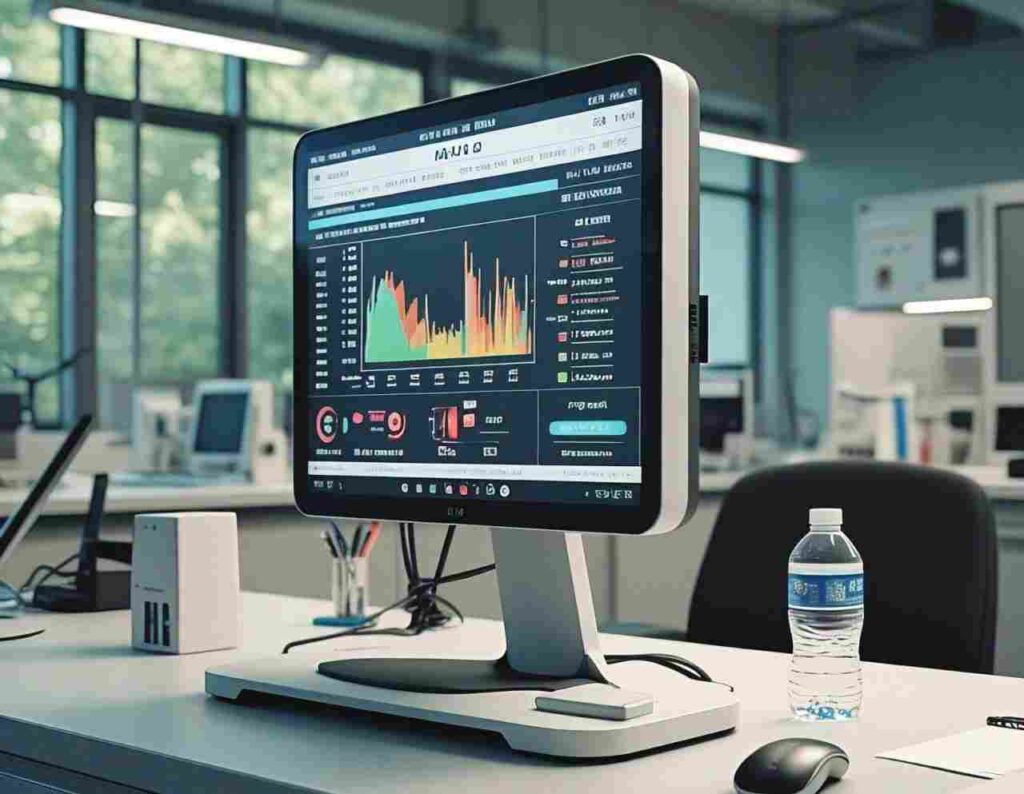
From vaccination centres to hospitals, pathology labs to data centres, residential townships to branded hotels, and corporate offices to R&D centres, shared spaces have heightened awareness about cleanliness. While cleaning has become a necessity, especially in workplaces housing vulnerable individuals, managing IAQ has become equally critical. Nandakumar Marar of Clean India Journal explores the extent of air quality monitoring, technologies, processes, challenges and the inter-relation between indoor and outdoor air quality maintenance in the pharma and food processing industries.

The air quality inside depends on air quality outside. While some dust is generated indoors, most comes from outside. Controlling the external environment will impact IAQ.”
– Brijmohan Sharma
Awareness about available technologies and equipment is growing, from aerosols to air purifiers, moisture-reducing ACs to indoor plants. Rusan Pharma Limited’s Brijmohan Sharma (Head, Quality Assurance and Regulatory Affairs), during a conversation, shared insights on air quality in pharma factories and corporate offices. “The air quality inside depends on air quality outside. The key is to plant more trees to control dust. While some dust is generated indoors, most comes from outside. Controlling the external environment will impact IAQ,” he explained.
Established in 1994, Rusan Pharma has its corporate office in Mumbai, with facilities in Kandla (Gujarat), Ankleshwar (Gujarat), Dehradun (Uttarakhand), and Pithampur (Madhya Pradesh). Temperature and dust control are critical and influence the selection of sites. “In the pharma manufacturing segment, sites are chosen based on air quality and environmental control. “Kandla SEZ, for instance, has no polluting units, ensuring better air quality,” said Sharma, who has been with Rusan for 25 years.
Specializing in narcotics, psychotropic drugs, tuberculosis, de-addiction and pain management, Rusan prioritises IAQ. “Inside, controlled air circulation systems like HVAC manage temperature and humidity. In production areas, 10-20% fresh air is introduced every cycle. Dust extractors minimize dust, while in non-production zones, cool air circulation ensures IAQ,” he added. “Central air-conditioning in our Mumbai office follows the same principle. Maintenance is key, with AC units cleaned monthly to prevent cross-contamination.”

On air pollution in urban areas, Sharma noted: “Night-time contamination is higher as particles settle due to lower temperatures. Most infections occur at night, leading to morning symptoms like sore throat and breathlessness. Dust extractors or ionizers can help at night, while daytime contamination increases when doors and windows are left open. AC systems recirculate this air.”
Corporate offices and high-footfall areas use aerosols to maintain air freshness, but Sharma believes they work better in dry places like Gurugram than humid cities like Mumbai. “Humidity in Mumbai is more than 70 per cent throughout the year, except in winter months. Aerosol increases humidity, corrosion also can happen when droplets formed after fumigation get deposited on the surface and over long periods, corrosion sets in. Aerosols are useful in areas where particle contamination is very high, the spraying makes them heavy and settle down. Construction sites, especially in closed areas, where aerosols are most effective and can be made mandatory. Risk-based analysis states particle contamination is more harmful to humans than from high humidity,” he explained.
Re-development and infrastructure investments have made IAQ a priority. Employees and citizens struggle with dust and pollution. “Standalone systems are ineffective in offices. Central dust extraction systems using ionization are better, as they settle particles, making them harmless. When standalone systems are used, opening a door allows high-concentration dust to rush in, worsening the problem,” he stated.
Indoor plants aid IAQ but require maintenance. “Plants need fresh air; they generate carbon dioxide. They should be moved outdoors twice a week for better results. Keeping ACs on 24/7 is not cost-effective and leads to stale air circulation. In homes, vacuuming and wet mopping are more effective than sweeping,” he suggested.
Masks are making a comeback, but Sharma warns against poor hygiene. “We often reuse masks without cleaning them. Their porous surface allows bacteria to multiply, making them a potential source of infection. Without proper hygiene, masks can do more harm than good,” he cautioned.

Poor IAQ leads to discomfort, reduced focus, air pollution, and increased HVAC maintenance costs. While biological contamination lead to product recalls, regulatory penalties and patient harm.”
– Vishwas Bhatnagar
Sharing a case study, Head Housekeeping-Cadila Pharmaceuticals Vishwas Bhatnagar, recollects a 2008 incident where a pharmaceutical company had to recall sterile injectable heparin due to contamination. “The root cause was inadequate air filtration, allowing microbial contamination into production. The company faced regulatory scrutiny and halted production until upgrades were made,” he said.
Discussing IAQ concerns in pharma, Bhatnagar highlighted contamination control, microbial and particle contamination, temperature and humidity management, worker safety, and regulatory compliance. “Preventing airborne dust, controlling bacteria and viruses, ensuring stable conditions for product integrity, and maintaining worker safety are key IAQ aspects. Regular sampling, continuous monitoring, filtration checks, airflow management, audits, and staff feedback ensure compliance,” he explained.
“Air samples from different production areas are tested for microbial and chemical pollutants, sensors are used to monitor temperature, humidity and air pressure in compliance with required standards, testing and validating HEPA filters and air filtration systems, ensuring proper air flow and air exchange rates in controlled environments, internal and external audits to make sure IAQ as per standards, feedback from staff to identify air quality problems early, maintenance of ventilation systems for optimal functioning are steps taken in this direction.”
Cadila compliances include ISO 14644-1, FDA and EMA guidelines, HEPA filtration, and strict environmental controls. “Maintaining cleanrooms requires high-efficiency particulate air (HEPA) filters, specific air change rates, and controlled temperature (18-22°C) and humidity (40-60%). Monitoring particle counts in critical zones is crucial,” he elaborated.



Bhatnagar also addressed the risks of VOCs. “VOCs cause respiratory issues, dizziness, and headaches, can contaminate products, and violate industry standards. Poor IAQ leads to discomfort, reduced focus, air pollution, and increased HVAC maintenance costs,” he warned.
On biological contaminants like mould and bacteria, he stressed: “These pose serious risks in pharma, leading to product recalls, regulatory penalties, and patient harm. Workers face respiratory issues and allergic reactions. Strict monitoring, air filtration, and cleanroom protocols are essential.”
Regarding airborne particulate matter (PM), Cadila employs multiple controls. “We install HEPA filters, adhere to ISO 14644-1 classifications, conduct frequent air sampling, ensure proper airflow, enforce protective gear usage, use containment systems, and maintain HVAC systems for optimal performance,” he stated.
Poor IAQ impacts employee health and productivity. “Respiratory problems, fatigue, dizziness, and headaches are common. Low IAQ reduces mental clarity, increases sick leave, and lowers productivity. Long-term exposure leads to chronic issues, affecting both employees and business operations,” Bhatnagar concluded.
The consequences of inadequate IAQ — from product recalls to regulatory non-compliance and worker health risks — are severe. Cadila’s proactive IAQ management, including adherence to global standards and rigorous monitoring, exemplifies best practices.
For pharmaceutical companies, robust IAQ management is not just regulatory compliance but a vital investment in product integrity, employee well-being, operational efficiency, and business continuity. Neglecting IAQ is a risk no manufacturer can afford.
 CIJConnect Bot-enabled WhatsApp
CIJConnect Bot-enabled WhatsApp









